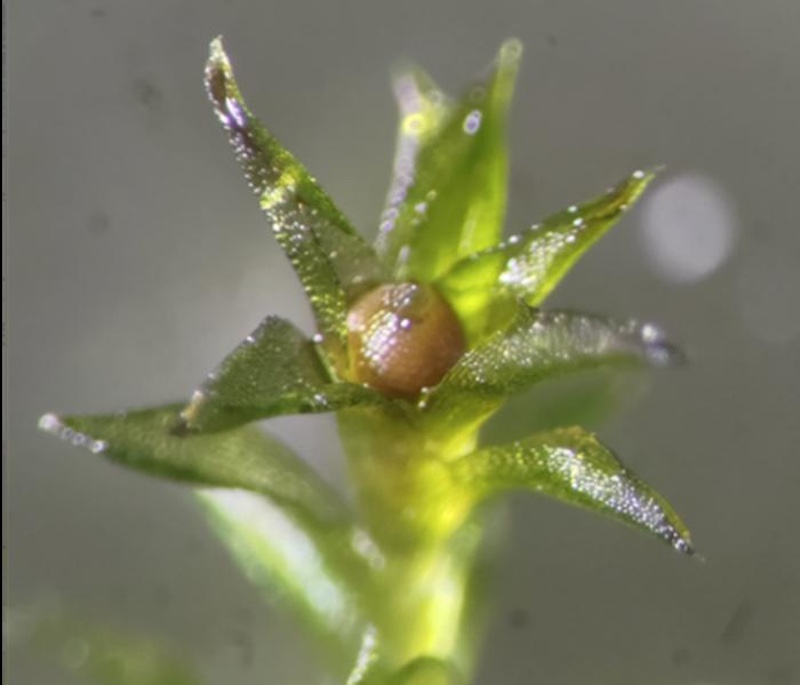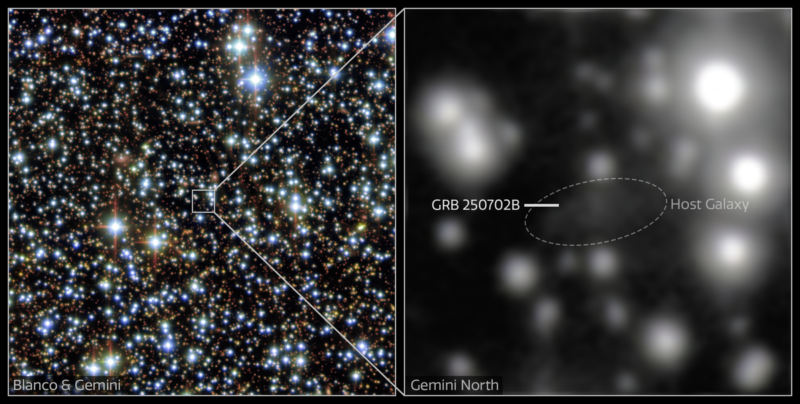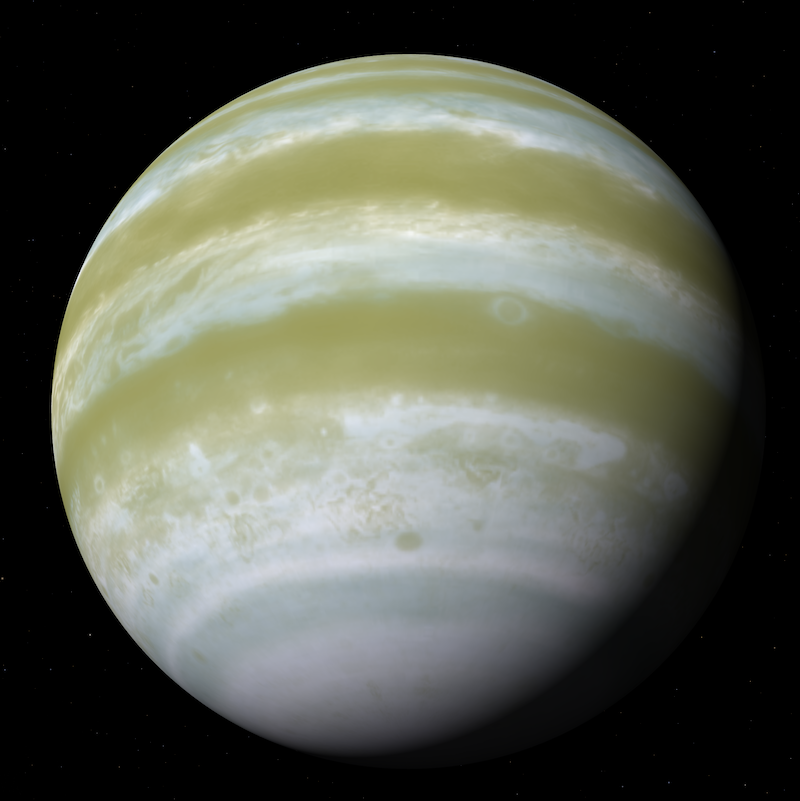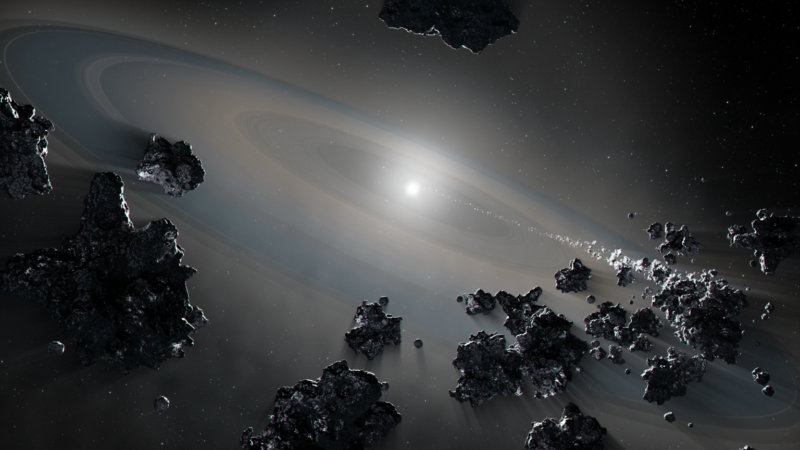Now Reading: Ancient water in protoplanetary disk is older than its star
-
01
Ancient water in protoplanetary disk is older than its star
Ancient water in protoplanetary disk is older than its star
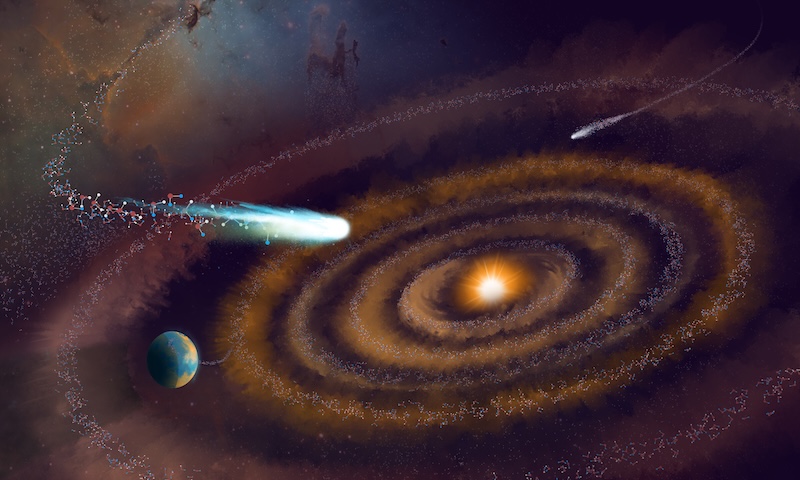
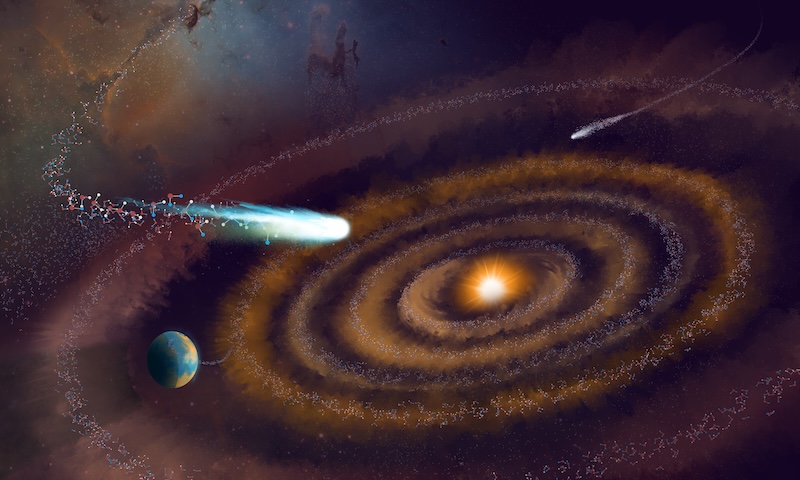
Science matters. Wonder matters. You matter.
Join our 2025 Donation Campaign today.
- Astronomers have discovered heavy water in the planet-forming disk of a young star, V883 Ori.
- The amount of heavy water they detected in the disk suggests it’s ancient water that originated from the molecular cloud that formed the star.
- Thus, a lot of the water in our solar system could be older than the sun, the new research suggests.
Ancient water in a protoplanetary disk and what that means for us
On October 15, 2025, astronomers said that – for the first time – they’ve detected the presence of heavy water in the planet-forming disk of a young star. Specifically, radio telescope observations of the star V883 Ori show heavy water in its protoplanetary disk. The water formed when molecular clouds collapsed to create that star. The results indicate that water in planetary systems can be older than the star around which it formed.
Plus, our own solar system once looked similar to V883 Ori, 4.5 billion years ago. Therefore, it’s likely that some of the life-giving water around us is even older than the sun.
Margot Leemker of the University of Milan is the lead author of the paper that presented these new findings. She said:
Our detection indisputably demonstrates that the water seen in this planet-forming disk must be older than the central star and formed at the earliest stages of star and planet formation.
This presents a major breakthrough in understanding the journey of water through planet formation, and how this water made its way to our solar system, and possibly Earth, through similar processes.
The researchers published their study in the peer-reviewed journal Nature Astronomy on October 15, 2025.
What is heavy water?
Water is a molecule made of one oxygen atom and two hydrogen atoms. Most hydrogen atoms, created during the Big Bang, consist of a proton and electron. In addition, the Big Bang also created very small amounts of deuterium. This is a form of hydrogen that has a proton, electron and neutron.
Heavy water is chemically described as D2O. That means each molecule of heavy water is made of two deuterium (D) atoms and one oxygen (O) atom. In our solar system, heavy water is mixed in with regular water in very small quantities. Here on Earth, roughly one out of every 41 million water molecules is heavy water.
From molecular clouds to protoplanetary disks
Astronomers have long been fascinated by how water is created in our universe. How did it form? How old is it? Did water in our solar system originate in molecular clouds before the sun existed? Or was the water destroyed and recreated during the planet-forming phase of our solar system?
Molecular clouds in space consist of gases and dust grains. Hydrogen is the most abundant gas, created during the Big Bang. Other gases in these clouds include oxygen and carbon monoxide. There are also dust particles suspended in the clouds, mostly silicate and carbon grains. Long-dead stars that ended as planetary nebulae or supernovae formed these heavier gases and dust.
Under certain conditions in these frigid molecular clouds, water forms when oxygen atoms on grains of dust capture hydrogen atoms. As a result, the water is frozen onto the dust grains.
If a molecular cloud is massive enough, gravity will cause it to collapse to form a protostar. That’s a very young star still gathering mass from its surrounding cloud. This process generates a lot of heat. As a result, some of the frozen water near the protostar converts to a gaseous form. However, the water in other regions of the dust cloud remain frozen.
The spinning motion of the protostar and surrounding cloud eventually forms a protoplanetary disk of gas and dust. As the system evolves, bodies such as planets coalesce in the disk. In addition, comets and asteroids from the disk’s cold outer fringes carry more water into the inner regions. Moreover, some may impact planets, adding to their water content.
Ancient water in V883 Ori
The Big Bang did not create high levels of deuterium. It created deuterium at only 27 parts per million relative to regular hydrogen. Therefore, one would expect naturally occurring heavy water in the universe to be just as scarce.
However, that’s not the case. Complex chemical processes in the frigid molecular clouds result in more deuterium atoms landing on dust grains to combine with oxygen to create heavy water ice. As a result, the molecular clouds have a higher-than-expected ratio of heavy water to ordinary water, compared to the deuterium-hydrogen ratio in the universe.
Finding ancient water in the planet-forming disk
The astronomers used the Atacama Large Millimeter/Submillimeter Array (ALMA) to measure the ratio of heavy water to ordinary water in the V883 Ori planet-forming disk. And they found it to be similar to the ratio in star-forming molecular clouds. The heavy water acts as a tracer, showing that some water in the V883 Ori disk originated from the molecular cloud that created the star. If that’s the case, the same could also be true for our solar system.
Paper co-author John Tobin of the National Radio Astronomy Observatory said:
Until now, we weren’t sure if most of the water in comets and planets formed fresh in young disks like V883 Ori, or if it’s ‘pristine,’ originating from ancient interstellar clouds.
The detection of heavy water, using sensitive isotopologue ratios (D2O/H2O), proves the water’s ancient heritage and provides a missing link between clouds, disks, comets and ultimately planets. This finding is the first direct evidence of water’s interstellar journey from clouds to the materials that form planetary systems, unchanged and intact.
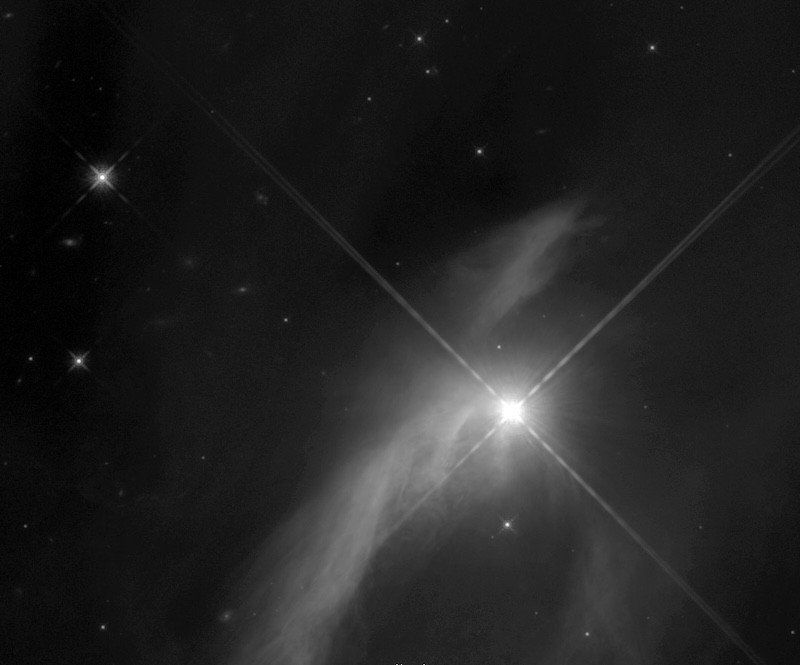
Bottom line: Astronomers found ancient water in the planet-forming disk of a young star. This heavy water formed in molecular clouds before the star was born.
Source: Pristine ices in a planet-forming disk revealed by heavy water
Via National Radio Astronomy Observatory
Via European Southern Observatory
The post Ancient water in protoplanetary disk is older than its star first appeared on EarthSky.
Stay Informed With the Latest & Most Important News
Previous Post
Next Post
-
 012024 in Review: Highlights from NASA in Silicon Valley
012024 in Review: Highlights from NASA in Silicon Valley -
 02Panasonic Leica Summilux DG 15mm f/1.7 ASPH review
02Panasonic Leica Summilux DG 15mm f/1.7 ASPH review -
 03From Polymerization-Enabled Folding and Assembly to Chemical Evolution: Key Processes for Emergence of Functional Polymers in the Origin of Life
03From Polymerization-Enabled Folding and Assembly to Chemical Evolution: Key Processes for Emergence of Functional Polymers in the Origin of Life -
 04How New NASA, India Earth Satellite NISAR Will See Earth
04How New NASA, India Earth Satellite NISAR Will See Earth -
 05And Thus Begins A New Year For Life On Earth
05And Thus Begins A New Year For Life On Earth -
 06Astronomy Activation Ambassadors: A New Era
06Astronomy Activation Ambassadors: A New Era -
07SpaceX launch surge helps set new global launch record in 2024












